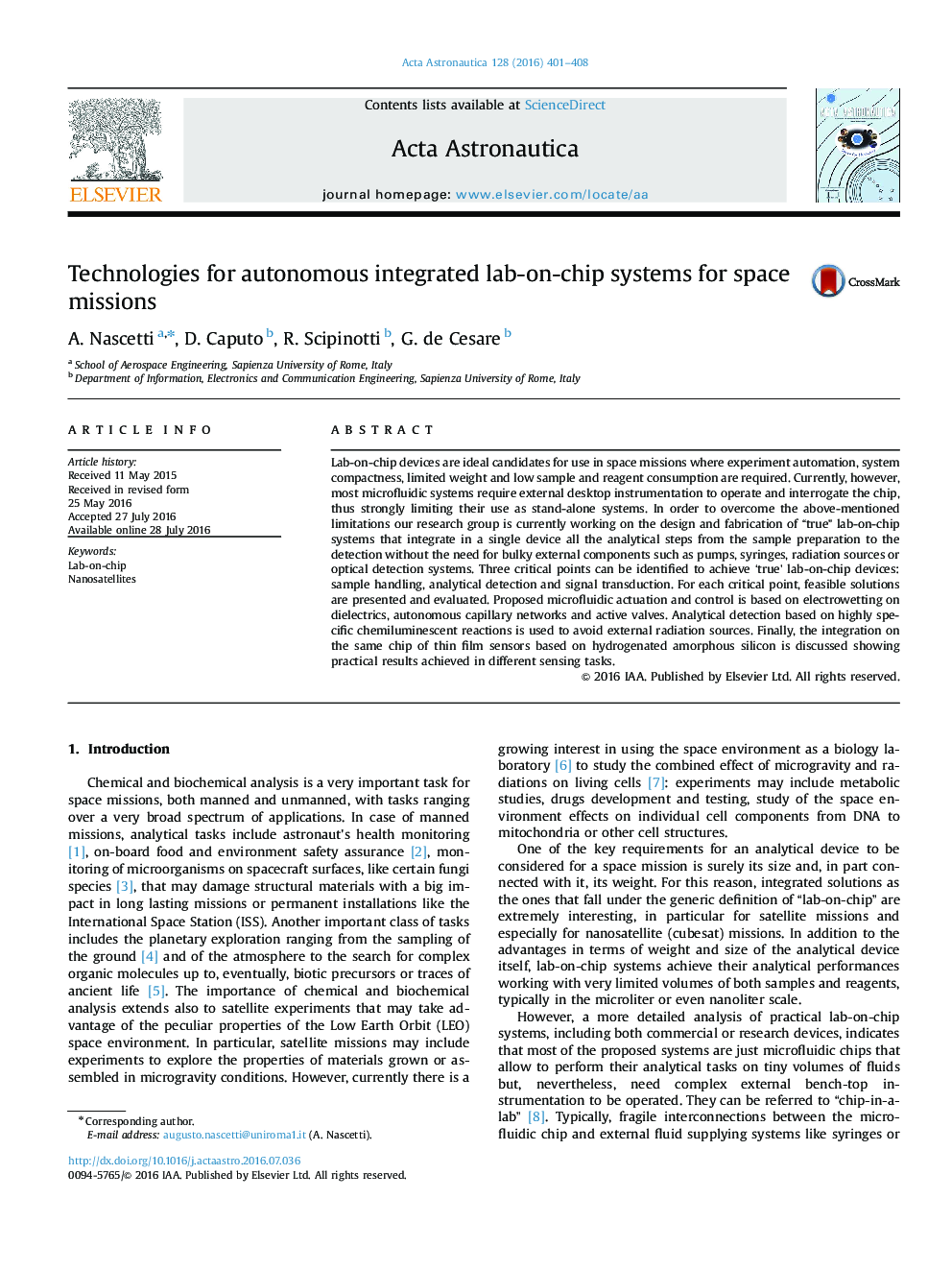| Article ID | Journal | Published Year | Pages | File Type |
|---|---|---|---|---|
| 1714163 | Acta Astronautica | 2016 | 8 Pages |
Abstract
Lab-on-chip devices are ideal candidates for use in space missions where experiment automation, system compactness, limited weight and low sample and reagent consumption are required. Currently, however, most microfluidic systems require external desktop instrumentation to operate and interrogate the chip, thus strongly limiting their use as stand-alone systems. In order to overcome the above-mentioned limitations our research group is currently working on the design and fabrication of “true” lab-on-chip systems that integrate in a single device all the analytical steps from the sample preparation to the detection without the need for bulky external components such as pumps, syringes, radiation sources or optical detection systems. Three critical points can be identified to achieve 'true' lab-on-chip devices: sample handling, analytical detection and signal transduction. For each critical point, feasible solutions are presented and evaluated. Proposed microfluidic actuation and control is based on electrowetting on dielectrics, autonomous capillary networks and active valves. Analytical detection based on highly specific chemiluminescent reactions is used to avoid external radiation sources. Finally, the integration on the same chip of thin film sensors based on hydrogenated amorphous silicon is discussed showing practical results achieved in different sensing tasks.
Keywords
Related Topics
Physical Sciences and Engineering
Engineering
Aerospace Engineering
Authors
A. Nascetti, D. Caputo, R. Scipinotti, G. de Cesare,
